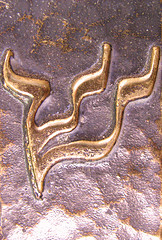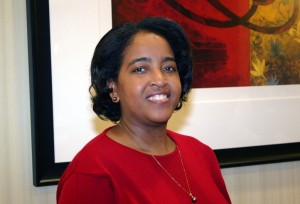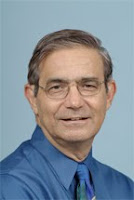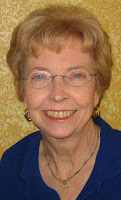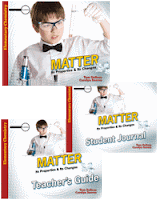 It is time for a FIRST Wild Card Tour book review! If you wish to join the FIRST blog alliance, just click the button. We are a group of reviewers who tour Christian books. A Wild Card post includes a brief bio of the author and a full chapter from each book toured. The reason it is called a FIRST Wild Card Tour is that you never know if the book will be fiction, non~fiction, for young, or for old…or for somewhere in between! Enjoy your free peek into the book!
It is time for a FIRST Wild Card Tour book review! If you wish to join the FIRST blog alliance, just click the button. We are a group of reviewers who tour Christian books. A Wild Card post includes a brief bio of the author and a full chapter from each book toured. The reason it is called a FIRST Wild Card Tour is that you never know if the book will be fiction, non~fiction, for young, or for old…or for somewhere in between! Enjoy your free peek into the book!
You never know when I might play a wild card on you!
Today’s Wild Card author is:
and the book:
Be Authentic
David C. Cook; New edition (January 1, 2010)
***Special thanks to Audra Jennings – The B&B Media Group for sending me a review copy.***
ABOUT THE AUTHOR:
 A man who has given his life to a deep examination of the Word of God, Dr. Warren W. Wiersbe is an internationally known Bible teacher, former pastor of The Moody Church in Chicago and the author of more than 150 books. For over thirty years, millions have come to rely on the timeless wisdom of Dr. Warren W. Wiersbe’s “Be” Commentary series. Dr. Wiersbe’s commentary and insights on Scripture have helped readers understand and apply God’s Word with the goal of life transformation. Dubbed by many as the “pastor’s pastor,” Dr. Wiersbe skillfully weaves Scripture with historical explanations and thought-provoking questions, communicating the Word in such a way that the masses grasp its relevance for today.
A man who has given his life to a deep examination of the Word of God, Dr. Warren W. Wiersbe is an internationally known Bible teacher, former pastor of The Moody Church in Chicago and the author of more than 150 books. For over thirty years, millions have come to rely on the timeless wisdom of Dr. Warren W. Wiersbe’s “Be” Commentary series. Dr. Wiersbe’s commentary and insights on Scripture have helped readers understand and apply God’s Word with the goal of life transformation. Dubbed by many as the “pastor’s pastor,” Dr. Wiersbe skillfully weaves Scripture with historical explanations and thought-provoking questions, communicating the Word in such a way that the masses grasp its relevance for today.
Product Details:
List Price: $12.99
Paperback: 224 pages
Publisher: David C. Cook; New edition (January 1, 2010)
Language: English
ISBN-10: 1434766306
ISBN-13: 978-1434766304
AND NOW…THE FIRST CHAPTER:

Like Father , Like Son—Almost
(Genesis 25—26)
Isaac was the son of a famous father (Abraham) and the father of a famous son (Jacob), and for those reasons he is sometimes considered a lightweight among the patriarchs. Compared to the exploits of Abraham and Jacob, Isaac’s life does seem conventional and commonplace. Although he lived longer than either Abraham or Jacob, only six chapters are devoted to Isaac’s life in the Genesis record, and only one verse in Hebrews 11 (v. 9).
Isaac was a quiet, meditative man (Gen. 24:63), who would rather pack up and leave than confront his enemies. During his long life, he didn’t travel far from home. Abraham had made the long journey from Haran to Canaan, and had even visited Egypt, and Jacob went to Haran to get a wife, but Isaac spent his entire adult life moving around in the land of Canaan. If there had been an ancient Middle East equivalent to our contemporary “jet set,” Isaac wouldn’t have joined it.
However, there are more Isaacs in this world than there are Abrahams or Jacobs, and these people make important contributions to society and to the church, even if they don’t see their names in lights or even in the church bulletin. Furthermore, Isaac was a living part of the divine plan that eventually produced the Jewish nation, gave us the Bible, and brought Jesus Christ into the world, and that’s nothing to be ashamed of.
Isaac wasn’t a failure; he was just different. After all, the people in each generation have to find themselves and be themselves and not spend their lives slavishly trying to imitate their ancestors. “Men are born equal,” wrote psychiatrist Erich Fromm in Escape from Freedom, “but they are also born different.” Discovering our uniqueness and using it to the glory of God is the challenge that makes life what it is. Why be a cheap imitation when you can be a valuable original?
No generation stands alone, because each new generation is bound to previous generations whether we like it or not. Isaac was bound to Abraham and Sarah by ties that couldn’t be ignored or easily broken. Let’s look at some of those ties and discover what they teach us about our own life of faith today.
HE RECEIVED HIS FATHE R’S INHERITANCE (25:1–18)
Abraham recognized his other children by giving them gifts and sending them away, thereby making sure they couldn’t supplant Isaac as the rightful heir. Along with his father’s immense wealth (13:2; 23:6), Isaac also inherited the covenant blessings that God had given Abraham and Sarah (12:1–3; 13:14–18; 15:1–6). Isaac had parents who believed God and, in spite of occasional mistakes, tried to please Him.
Abraham’s firstborn son, Ishmael (chap. 16), wasn’t chosen to be the child of promise and the heir of the covenant blessings. God promised to bless Ishmael and make him a great nation, and He kept His promise (17:20–21; 25:12–16); “But my covenant will I establish with Isaac” (17:21;
Rom. 9:6–13). Ishmael was on hand for his father’s funeral (Gen. 25:9), but he wasn’t included in the reading of his father’s will.
Ishmael pictures the “natural” or unsaved person (1 Cor. 2:14), who is outside the faith and hostile to the things of God. But Isaac pictures those who have trusted Jesus Christ and experienced the miraculous new birth by the power of God (1 Peter 1:22–23). “Now we, brethren, as Isaac was, are the children of promise” (Gal. 4:28). Ishmael was born a slave, but Isaac was born free (4:21–31; 5:1–2); and Ishmael was born poor, but Isaac was born rich. Every believer in Jesus Christ shares all the blessings of the Spirit in Christ (Eph. 1:3) and is part of Christ’s glorious inheritance (vv. 11, 18).
From the moment of birth, we’re all dependent on the older generation to care for us until we can care for ourselves. We’re also indebted to previous generations for guarding and handing down to us the knowledge, skills, traditions, and culture that are extremely important to daily life. Imagine what life would be like if each new generation had to devise the alphabet, invent printing, discover electricity, or design the wheel!
The most important part of Isaac’s legacy wasn’t the great material wealth his father had left him. Isaac’s most important legacy was the spiritual wealth from his father and mother: knowing and trusting the true and living God and being a part of the covenant blessings that God had graciously bestowed upon Abraham and Sarah and their descendants. How tragic it is when the children of devout Christian believers turn their backs on their priceless spiritual heritage and, like Ishmael and Esau, live for the world and the flesh instead of for the Lord!
HE PRAYED TO HIS FATHER’S GOD (25:19–34)
Genesis is a record of ten successive “generations.” Generations come and go, but the Lord remains and never changes. “Lord, You have been our dwelling place in all generations” (Ps. 90:1 NKJV).
A devoted home (vv. 19–20). When Isaac was forty years old, God selected Rebekah to be his wife (chap. 24; 25:20), and we have every reason to believe that they were both devoted to the Lord and to each other. The record indicates that Rebekah was the more aggressive of the two when it came to family matters, but perhaps that’s just the kind of wife Isaac needed. Whatever mistakes Isaac may have made as a husband and father, this much is true: As a young man, he willingly put himself on the altar to obey his father and to please the Lord (chap. 22; Rom. 12:1–2).
A disappointed home (v. 21). Isaac and Rebekah waited twenty years for a family, but no children came. The entire book of Genesis emphasizes the sovereignty of God and the wisdom of His “delays.” Abraham and Sarah had to wait twenty-five years for Isaac to be born; Jacob had to labor fourteen years to obtain his two wives; and Joseph had to wait over twenty years before he was reconciled to his brothers. Our times are in His hands (Ps. 31:15), and His timing is never wrong.
Like Abraham, Isaac was a man of prayer, so he interceded with the Lord on behalf of his barren wife. Isaac had every right to ask God for children because of the covenant promises the Lord had made to his father and mother, promises Isaac had heard repeated in the family circle and that he believed. If Rebekah remained barren, how could Abraham’s seed multiply as the dust of the earth and the stars of the heavens? How could Abraham’s seed become a blessing to the whole world (Gen. 12:1–3; 13:16; 15:5; 17:6)?
It has well been said that the purpose of prayer is not to get our will done in heaven but to get God’s will done on earth. Even though every Jewish couple wanted children, Isaac wasn’t praying selfishly. He was concerned about God’s plan for fulfilling His covenant and blessing the whole world through the promised Messiah (3:15; 12:1–3). True prayer means being concerned about God’s will, not our own wants, and claiming God’s promises in the Word. The Lord answered Isaac’s prayer and enabled Rebekah to conceive.
A distressed home (vv. 22–23). One problem soon led to another, because Rebekah’s pregnancy was a difficult one: The babies in her womb were struggling with each other. The Hebrew word means “to crush or oppress,” suggesting that the fetal movements were not normal. Since Rebekah wondered if the Lord was trying to say something to her, she went to inquire. Isaac was fortunate to have a wife who not only knew how to pray, but who also wanted to understand God’s will for herself and her children.
In salvation history, the conception and birth of children is a divinely ordained event that has significant consequences. This was true of the birth of Isaac (chaps. 18, 21), the twelve sons of Jacob (29:30—30:24), Moses (Ex. 1—2), Samuel (1 Sam. 1—2), David (Ruth 4:17–22), and our Lord Jesus Christ (Gal. 4:4–5). Conception, birth, and death are divine appointments, not human accidents, a part of God’s wise and loving plan for His own people (Ps. 116:15; 139:13–16).
Imagine Rebekah’s surprise when she learned that the two children would struggle with each other all their lives! Each child would produce a nation, and these two nations (Edom and Israel) would compete, but the younger would master the older. Just as God had chosen Isaac, the second-born, and not Ishmael, the firstborn, so He chose Jacob, the second-born, and not Esau, the firstborn. That the younger son should rule the elder was contrary to human tradition and logic, but the sovereign God made the choice (Rom. 9:10–12), and God never makes a mistake.
A divided home (vv. 24–28). Esau probably means “hairy.” He also had the nickname “Edom,” which means “red,” referring to his red hair and the red lentil soup Jacob sold him (vv. 25, 30). The twin boys not only looked different but they also were different in personality. Esau
was a robust outdoorsman, who was a successful hunter, while Jacob was a “home boy.” You would think that Isaac would have favored Jacob, since both of them enjoyed domestic pursuits, but Jacob was Rebekah’s favorite. Rebekah was a hands-on mother who knew what was going on in the home and could contrive ways to get what she thought was best.
It’s unfortunate when homes are divided because parents and children put their own personal desires ahead of the will of God. Isaac enjoyed eating the tasty game that Esau brought home, a fact that would be important in later family history (chap. 27). Isaac, the quiet man, fulfilled his dreams in Esau, the courageous man, and apparently ignored the fact that his elder son was also a worldly man. Did Isaac know that Esau had forfeited his birthright? The record doesn’t tell us. But he did know that God had chosen the younger son over the elder son.
A friend of mine kept a card under the glass on his office desk that read: “Faith is living without scheming.” Jacob could have used that card. Before his birth, he had been divinely chosen to receive the birthright and the blessing; thus there was no need for him to scheme and take advantage of his brother. It’s likely that Jacob had already seen plenty of evidence that Esau didn’t care about spiritual things, an attitude that made Esau unfit to receive the blessing and accomplish God’s will. Perhaps Jacob and his mother had even discussed the matter.
The name “Jacob” comes from a Hebrew word (yaaqob) that means “may God protect,” but because it sounds like the words aqeb (“heel”) and aqab (“watch from behind” or “overtake”), his name became a nickname: “he grasps the heel” or “he deceives.” Before birth, Jacob and Esau had contended, and at birth, Jacob grasped his brother’s heel. This latter action was interpreted to mean that Jacob would trip up his brother and take advantage of him. The prediction proved true.
The fact that God had already determined to give the covenant blessings to Jacob didn’t absolve anybody in the family from their obligations to the Lord. They were all responsible for their actions, because divine sovereignty doesn’t destroy human responsibility. In fact, knowing that we’re the chosen of God means we have a greater responsibility to do His will.
HE FACED HIS FATHER’S TEMPTATIONS (26:1–11)
True faith is always tested, either by temptations within us or trials around us (James 1:1–18), because a faith that can’t be tested can’t be trusted. God tests us to bring out the best in us, but Satan tempts us to bring out the worst in us. In one form or another, each new generation must experience the same tests as previous generations, if only to discover that the enemy doesn’t change and that human nature doesn’t improve. Abraham is mentioned eight times in this chapter, and you find the word “father” six times. Isaac was very much his father’s son. Abraham Lincoln was right: “We can not escape history.”
The temptation to run (vv. 1–6). When Abraham arrived in Canaan, he found a famine in the land and faced his first serious test of faith (12:10—13:4). His solution was to abandon the place God had chosen for him, the place of obedience, and to run to Egypt, thus establishing a bad example for his descendants who were prone to imitate him.5 The safest place in the world is in the will of God, for the will of God will never lead us where His grace can’t provide for us. Unbelief asks, “How can I get out of this,” while faith asks, “What can I get out of this?”
When Isaac faced the problem of a famine, he decided to go to Gerar, the capital city of the Philistines, and get help from Abimelech.6 Isaac and Rebekah were probably living at Beer Lahai Roi at that time (25:11), which means they traveled about seventy-five miles northeast to get to Gerar. Even after arriving in Gerar, Isaac and Rebekah may have been tempted to go south to Egypt, though God had warned them not to consider that possibility.
God permitted Isaac to remain in Philistia and promised to bless him. God had promised Abraham that his descendants would be greatly multiplied and one day would possess all those lands. Thus Isaac had a right to be there as long as God approved (12:2–3; 13:16; 15:5; 17:3–8; 22:15–18). God blessed Isaac for Abraham’s sake (25:5, 24), just as He has blessed believers today for the sake of Jesus Christ.
We can never successfully run away from trials, because God sees to it that His children learn the lessons of faith regardless of where they go. We can never grow in faith by running from difficulty, because “tribulation produces perseverance; and perseverance, character” (Rom.
5:3–4 NKJV). Like David, we may wish we had “wings like a dove” so we could “fly away and be at rest” (Ps. 55:6 NKJV), but if we did, we’d always be doves when God wants us to “mount up with wings as eagles” (Isa. 40:31).
The temptation to lie (vv. 7–11). Isaac could flee from famine, but when he put himself into a situation that offered no escape, he had to turn to deception to protect himself. Abraham committed this same sin twice, once in Egypt (Gen. 12:14–20) and once in Philistia (chap. 20). Remember, faith is living without scheming, and telling lies seems to be one of humanity’s favorite ways to escape responsibility.
Isaac was asked about the woman who was with him and, like his father Abraham before him, he said she was his sister. But when Abimelech saw Isaac caressing Rebekah, he knew she was his wife. Why did Isaac lie? Because he was afraid his pagan host would kill him in order to obtain his beautiful wife. His lie was evidence of his unbelief, for if he had claimed the covenant promise when he prayed for children (25:21), why couldn’t he claim that same covenant promise to protect himself and his wife?
The English poet John Dryden wrote, “Truth is the foundation of all knowledge and the cement of all societies.” When people don’t keep their word, the foundations of society begin to shake and things start to fall apart. Happy homes, lasting friendships, thriving businesses, stable governments, and effective churches all depend on truth for their success. The American preacher Phillips Brooks said, “Truth is always strong, no matter how weak it looks; and falsehood is always weak, no matter how strong it looks.” Truth is cement; falsehood is whitewash.
When he found himself in difficulty, Isaac was tempted to run and to lie, and we face these same temptations today. Isaac succumbed to temptation and was found out. It’s a sad day when unconverted people like Abimelech publicly expose God’s servants for telling lies. What an embarrassment to the cause of truth!
HE DUG AGAIN HIS FATHER’S WELLS (26:12–35)
Isaac inherited flocks and herds from his father, who had lived a nomadic life, but now the wealthy heir settled down and became a farmer, remaining in Gerar “a long time” (v. 8).
The blessing (vv. 12–14). Isaac and his neighbors had access to the same soil, and they depended on the same sunshine and rain, but Isaac’s harvests were greater than theirs, and his flocks and herds multiplied more abundantly. The secret? God kept His promise and blessed Isaac in all that he did (vv. 3–5). God would give a similar blessing to Jacob years later (chap. 31).
But Isaac was a deceiver! How could the Lord bless somebody who claimed to be a believer and yet deliberately lied to his unbelieving neighbors? Because God is always faithful to His covenant and keeps His promises (2 Tim. 2:11–13), and the only condition God attached to His promise of blessing was that Isaac remain in the land and not go to Egypt.
God also blessed Isaac because of Abraham’s life and faith (Gen. 26:5), just as He blesses us for the sake of Jesus Christ. We’ll never know until we get to heaven how many of our blessings have been “dividends” from the spiritual investments made by godly friends and family who have gone before.
The conflict (vv. 14–17). In spite of his material blessings, Isaac still suffered because of his lie, because the blessings he received brought burdens and battles to his life. Seeing his great wealth, the Philistines envied him and decided he was a threat to their safety. (A similar
situation would occur when the Jews multiplied in Egypt. See Ex. 1:8ff.)
“The blessing of the LORD makes one rich, and He adds no sorrow with it” (Prov. 10:22 NKJV). Had Isaac not lied about his wife, God would not have disciplined him but would have given him peace with his neighbors (Prov. 16:7). Because of his sin, however, Isaac’s material blessings
caused him trouble.
The Philistines tried to get Isaac to leave their land and settle elsewhere, and to encourage this they stopped up Abraham’s wells and deprived Isaac’s flocks and herds of the water they desperately needed. Water was a precious commodity in the Near East, and adequate wells were necessary if you were to succeed in the land. The crisis came when the king commanded Isaac to move away, and Isaac obeyed.
The search (vv. 18–22). No matter where Isaac journeyed, the enemy followed him and confiscated his father’s wells and also the new wells that Isaac’s servants dug. To find a well of “springing water” (v. 19) was a special blessing, for it guaranteed fresh water at all times, but the Philistines took that well, too. The names of the new wells that Isaac’s men dug reveal the
problems that he had with his neighbors, for Esek means “contention,” and Sitnah means “hatred.” But Rehoboth means “enlargement” because Isaac finally found a place where he was left alone and had room enough for his camp and his flocks and herds.
Whenever Abraham had a problem with people, he boldly confronted them and got the matter settled, whether it was his nephew Lot (13:5–18), the invading kings (chap. 14), Hagar and Ishmael (21:9ff.), or the Philistines (vv. 22ff.). But Isaac was a retiring man who wanted to avoid confrontation. Since he was a pilgrim, he could move his camp and be a peacemaker.
In every difficult situation of life, we must use discernment to know whether God wants us to be confronters like Abraham or peacemakers like Isaac, for God can bless and use both approaches. “If it is possible, as much as depends on you, live peaceably with all men” (Rom. 12:18 NKJV). Sometimes it isn’t possible, but at least we should try, and we must depend on the wisdom from above that is “pure” and “peaceable” (James 3:17).
Looking at Isaac’s experience from a spiritual point of view, we can learn an important lesson. In the Bible, wells sometimes symbolize blessings from the hand of the Lord (Gen. 16:14; 21:19; 49:22; Ex. 15:27; Num. 21:16–18; Prov. 5:15; 16:22; 18:4; Song 4:15; Isa. 12:3; John 4:14).9 The church keeps looking for something new, when all we need is to dig again the old wells of spiritual life that God’s people have depended on from the beginning—the Word of God, prayer, worship, faith, the power of the Spirit, sacrifice, and service—wells that we’ve allowed the enemy to fill up. Whenever there’s been a revival of spiritual power in the history of the church, it’s been because somebody has dug again the old wells so that God’s life-giving Spirit can be free to work.
The assurance (vv. 23–25). Beersheba was a very special place for Isaac, because there his father had entered into a covenant with the Philistine leaders (21:22ff.). Beersheba means “the well of the oath.” The Lord comes to us with His assuring Word just when we need encouragement (Acts 18:9–11; 23:11; 27:23–24; 2 Tim. 2:19). No matter who is against us, God is with us and for us (Gen. 28:15; 31:3; Rom. 8:31–39), and there’s no need for us to be afraid. In response to God’s gracious word of promise, Isaac built an altar and worshipped the Lord. He was ready to meet his adversaries.
Like his father Abraham, Isaac was identified by his tent and altar (Gen. 26:25; see also 12:7–8; 13:3–4, 18). Isaac was wealthy enough to be able to build himself a fine house, but his tent identified him as a pilgrim and stranger in the land (Heb. 11:8–10, 13–16). A fugitive is fleeing from home; a vagabond has no home; a stranger is away from home; but a pilgrim is heading home. The tent identified Isaac as a pilgrim, and the altar announced that he worshipped Jehovah and was heading to the heavenly kingdom.
Like Isaac, all who have trusted Jesus Christ are strangers in this world and pilgrims heading for a better world (1 Peter 1:1; 2:11). The body we live in is our tent; one day it will be taken down and we’ll go to the heavenly city (2 Cor. 5:1–8). Life here is brief and temporary, because this tent is fragile, but our glorified body will be ours for eternity (Phil. 3:20–21; 1 John 3:1–3). While we’re here on earth, let’s be sure we build the altar and give our witness that Jesus Christ is the Savior of the world.
The agreement (vv. 26–33). Isaac’s strategy paid off, because the Philistine leaders came to him to settle the matter of the property rights (21:22ff.). Fortified by God’s promises, Isaac was much bolder in his approach, and he confronted the Philistines with their misdeeds. It’s worth noting that Isaac’s conduct during this conflict made a great impression on them, and they could tell that the Lord was richly blessing him. More important than possessing his wells was the privilege Isaac had of sharing his witness with his pagan neighbors. (For a contrasting situation, see 1 Cor. 6:1–8.)
Isaac and the leaders were able to reach an agreement. To seal the treaty, Isaac hosted a feast, for in that culture, to eat with others was to forge strong links of friendship and mutual support. That same day, Isaac’s servants found one of Abraham’s wells (Gen. 21:25–31) and opened it, and Isaac gave it the original name, Beersheba. “The well of the oath” now referred to Isaac’s treaty as well as Abraham’s.
More conflict (vv. 34–35). Isaac was at peace with his neighbors, but he had war at home. His worldly son Esau had married two heathen wives who caused grief to Isaac and Rebekah. (Later, just to provoke his parents, he married a third heathen wife. See 28:8–9.) In view of Esau’s sinful lifestyle, we wonder that Isaac wanted to give him the patriarchal blessing (chap. 27).
All of us would like to find our Rehoboth (enlargement) where we have plenty of room and no contention, but Isaac’s Rehoboth was found only after he endured conflict. It’s through difficulties that God enlarges us for the larger places He prepares for us. “Thou hast enlarged me when I was in distress” (Ps. 4:1). When the troubles of our hearts are enlarged and we trust God, then the Lord can enlarge us (25:17) and bring us “into a large place” (18:19). If we want room, we have to suffer, because that’s the only way we can grow and feel at home in the larger place God gives us when we’re ready for it.
©2010 Cook Communications Ministries. Be Authentic by Warren Wiersbe. Used with permission. May not be further reproduced. All rights reserved.





